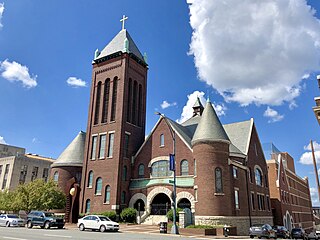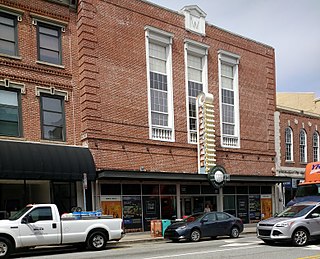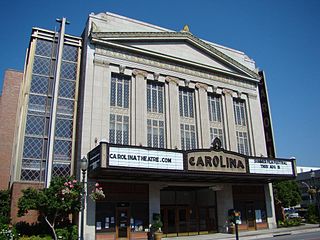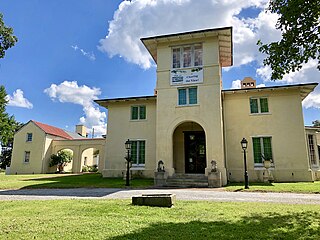Self-guided Sightseeing Tour #1 in Greensboro, United States
Legend
Tour Facts
1.1 km
14 m
Experience Greensboro in United States in a whole new way with our free self-guided sightseeing tour. This site not only offers you practical information and insider tips, but also a rich variety of activities and sights you shouldn't miss. Whether you love art and culture, want to explore historical sites or simply want to experience the vibrant atmosphere of a lively city - you'll find everything you need for your personal adventure here.
Individual Sights in GreensboroSight 1: West Market Street United Methodist Church
West Market Street United Methodist Church (WMSUMC) is one of the oldest churches in Greensboro, North Carolina, and is over 190 years old; WMSUMC is located in downtown Greensboro across from the courthouse. It is a relatively large church with approximately 1700 members, though not all are active. The current sanctuary was constructed between 1893 and 1898; it was the third sanctuary built by the congregation. Today, the church has expanded, with a larger educational complex adjacent to the sanctuary, and other properties, including an Early Childhood Center, held at nearby. The Senior Pastor is the Reverend Beth Crissman, with Associate Pastor the Reverend Jeremy Benton.
Wikipedia: West Market Street United Methodist Church (EN), Website
Sight 2: International Civil Rights Center & Museum

The International Civil Rights Center & Museum (ICRCM) is located in Greensboro, North Carolina, United States. Its building formerly housed the Woolworth's, the site of a nonviolent protest in the civil rights movement. Four students from North Carolina Agricultural and Technical State University started the Greensboro sit-ins at a "whites only" lunch counter on February 1, 1960. The four students were Franklin McCain, Joseph McNeil, Ezell Blair Jr., and David Richmond. The next day there were twenty students. The aim of the museum's founders is to ensure that history remembers the actions of the A&T Four, those who joined them in the daily Woolworth's sit-ins, and others around the country who took part in sit-ins and in the civil rights movement. The Museum is currently supported by earned admissions and Museum Store revenues. The project also receives donations from private donors as a means of continuing its operations. The museum was founded in 1993 and officially opened its doors fifty years to the day after the sit-in movements in Greensboro NC.
Wikipedia: International Civil Rights Center and Museum (EN), Website
Sight 3: Triad Stage
Triad Stage was a regional theatre located at 232 South Elm Street, Greensboro, North Carolina.
Sight 4: Carolina Theatre
The Carolina Theatre of Greensboro is Greensboro, North Carolina's only remaining historic theatre. It was billed as “The Showplace of the Carolinas” when it opened on Halloween night, 1927. The 2,200 seat structure was built for the Saenger-Publix Company, cost over $500,000 to build and was one of the first commercial buildings to be air conditioned in the state.
Sight 5: Blandwood Mansion
Blandwood Mansion is a historic house museum at 447 West Washington Street in Greensboro, North Carolina. Originally built as a four-room Federal style farmhouse in 1795, it was home to two-term North Carolina governor John Motley Morehead (1841-1844) under whose ownership it was transformed into its present appearance. It is believed to be the oldest extant example of the Italian Villa Style of architecture in the United States, and was designated a National Historic Landmark in 1988. In creating the design for Blandwood, architect Alexander Jackson Davis produced a popular prototype for American house designs in the Italianate style: a central tower projecting from the main facade. Saved from demolition in 1964 by preservation-minded Greensboro citizens, the house was opened as a museum in 1976 and remains open to the public today.
Share
How likely are you to recommend us?
Disclaimer Please be aware of your surroundings and do not enter private property. We are not liable for any damages that occur during the tours.
GPX-Download For navigation apps and GPS devices you can download the tour as a GPX file.



